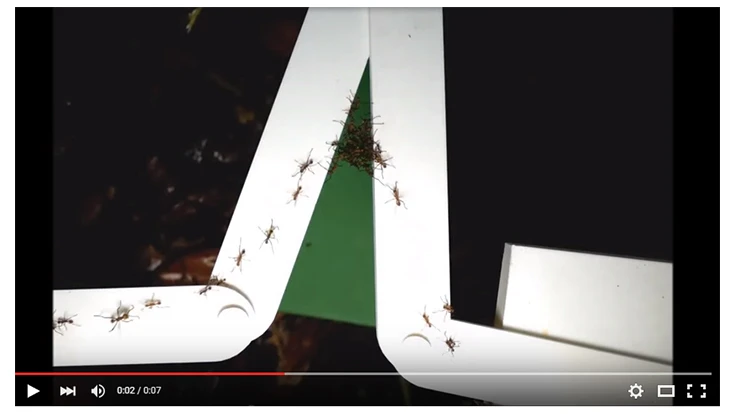
As reported on Phys.org, researchers are studying how army ants build living bridges by linking their bodies to span gaps and create shortcuts across rainforests in Central and South America. An international team of researchers has now discovered these bridges can move from their original building point to span large gaps and change position as required.
The bridges stop moving when they become so long that the increasing costs incurred by locking workers into the structure outweigh the benefit that the colony gains from further shortening their trail. Bridges dismantle when the ants in the structure sense the traffic walking over them slows down below a critical threshold.
Co-lead author Dr Christopher Reid, a postdoctoral researcher at the University of Sydney's Insect Behaviour and Ecology Lab and formerly with the New Jersey Institute of Technology, said the findings could be applied to develop swarm robotics for exploration and rescue operations. By analysing how ants optimise utility, researchers may be able to create simple control algorithms to allow swarms of robots to behave in similar ways to an ant colony.
The paper, 'Army ants dynamically adjust living bridges in response to a cost-benefit trade-off', is being published in the journal Proceedings of the National Academy of Sciences (PNAS).
Source: Phys.org
Latest from Pest Control Technology
- How to Get Rid of Odorous House Ants
- Massey Services Promotes Herndon to Director of Sales for Multi-Family Division
- NPMA Announces First Recipients of NPMA PRO Certified Credential
- Pestmaster of the Hudson Valley Acquires Catskill Animal Damage Control
- Photo Slideshow: Ant Identification Tips
- Video: Top 10 PCT Photo Contest Finalists
- UF/IFAS Study Reveals Boats as Perfect Vessels for Global Termite Spread
- Pest Control Consultants (Iowa) Earns Pinnacle Performance Award






